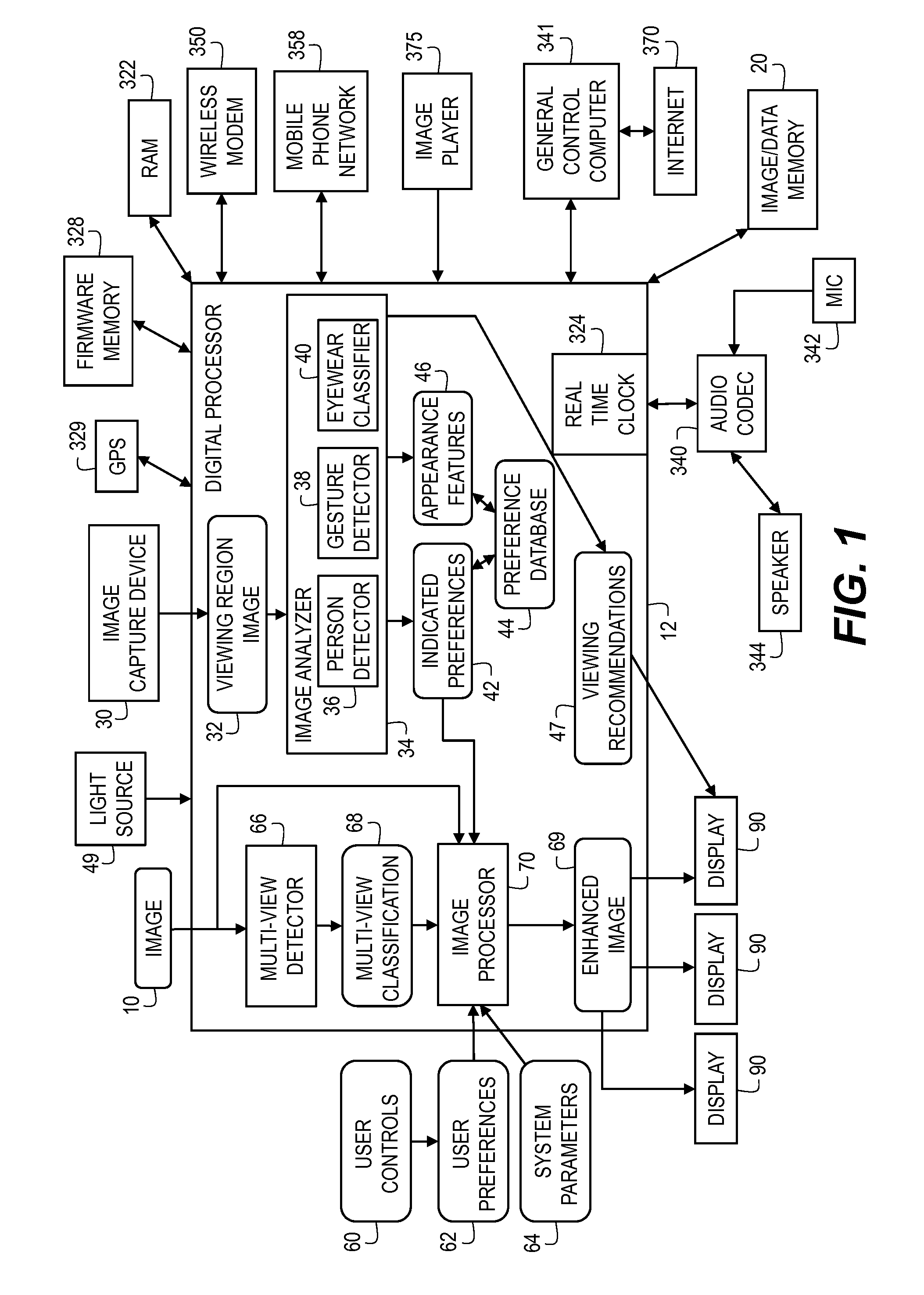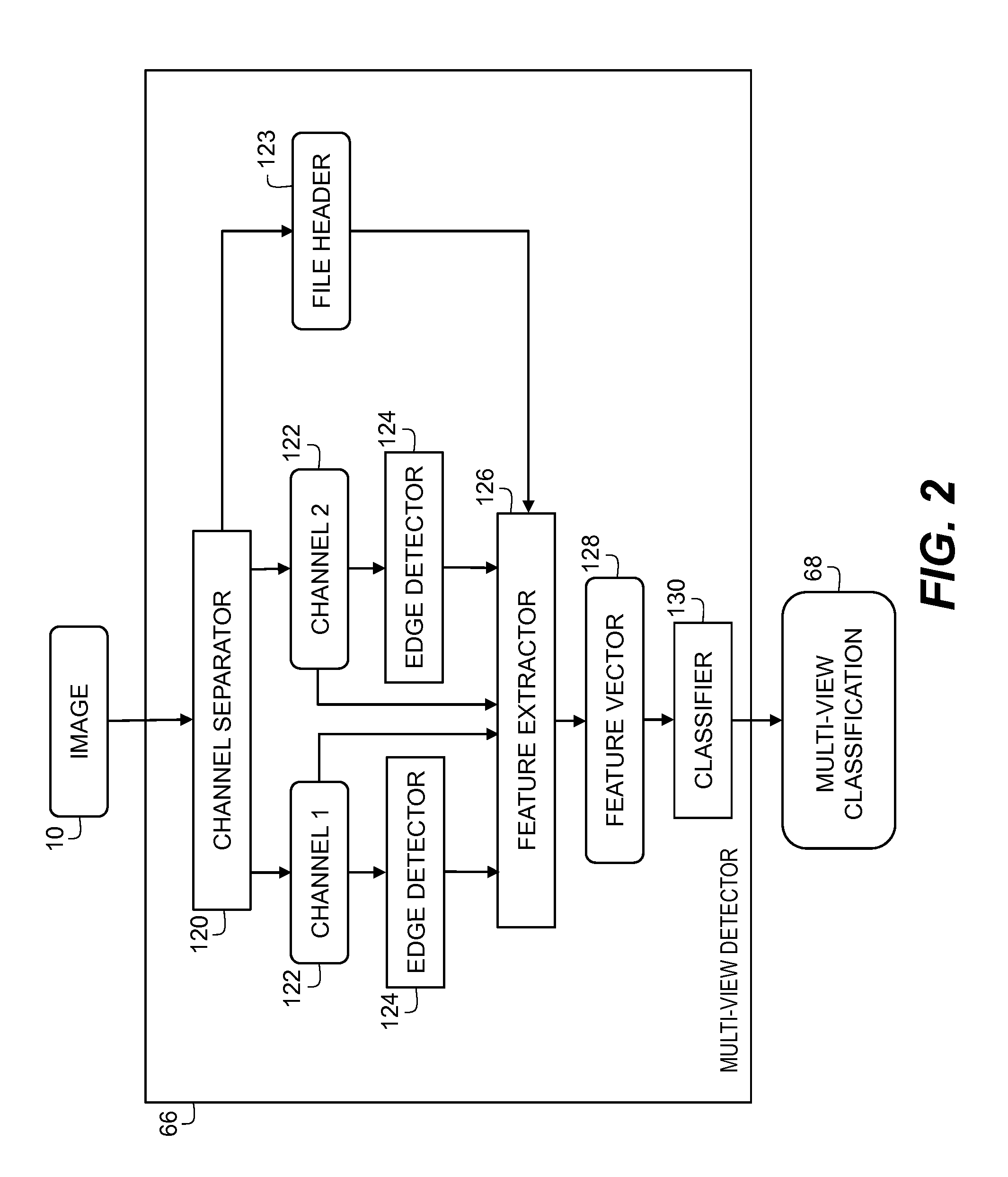Producing enhanced images from anaglyph images
a technology of enhanced images and anaglyphs, applied in image enhancement, image analysis, instruments, etc., can solve the problems of not being able to address automatic switching between modes, no communication is made to the display, and unsatisfactory viewing experience without the impression of 3-d
- Summary
- Abstract
- Description
- Claims
- Application Information
AI Technical Summary
Benefits of technology
Problems solved by technology
Method used
Image
Examples
example actions
and Recommendations
[0092]When indicated preferences 42 show that the viewers are wearing corrective lenses, no glasses, or sunglasses (i.e. something other than stereo glasses), then the image processor 70 uses information in the system parameters to determine how to process the images 10. If the image 10 is a single-view image, then it is displayed directly on a 2-D display 90 (i.e. the enhanced image 69 is the same as the image 10). If the image 10 is a multi-view image, then the image 10 is either converted to a 2-D image (discussed herein below) to produce an enhanced image 10, or the image 10 is displayed on a 3-D display 90 (e.g. a lenticular display such as the SynthaGram). The decision of whether to display the image 10 as a 2-D image or a 3-D image is also affected by the indicated preferences 42 from the gestures of the viewers (e.g. the viewer can indicate a reference for 3-D).
[0093]If the image 10 is an anaglyph image, the image processor 70 produces an enhanced image 69...
PUM
 Login to View More
Login to View More Abstract
Description
Claims
Application Information
 Login to View More
Login to View More - R&D
- Intellectual Property
- Life Sciences
- Materials
- Tech Scout
- Unparalleled Data Quality
- Higher Quality Content
- 60% Fewer Hallucinations
Browse by: Latest US Patents, China's latest patents, Technical Efficacy Thesaurus, Application Domain, Technology Topic, Popular Technical Reports.
© 2025 PatSnap. All rights reserved.Legal|Privacy policy|Modern Slavery Act Transparency Statement|Sitemap|About US| Contact US: help@patsnap.com



